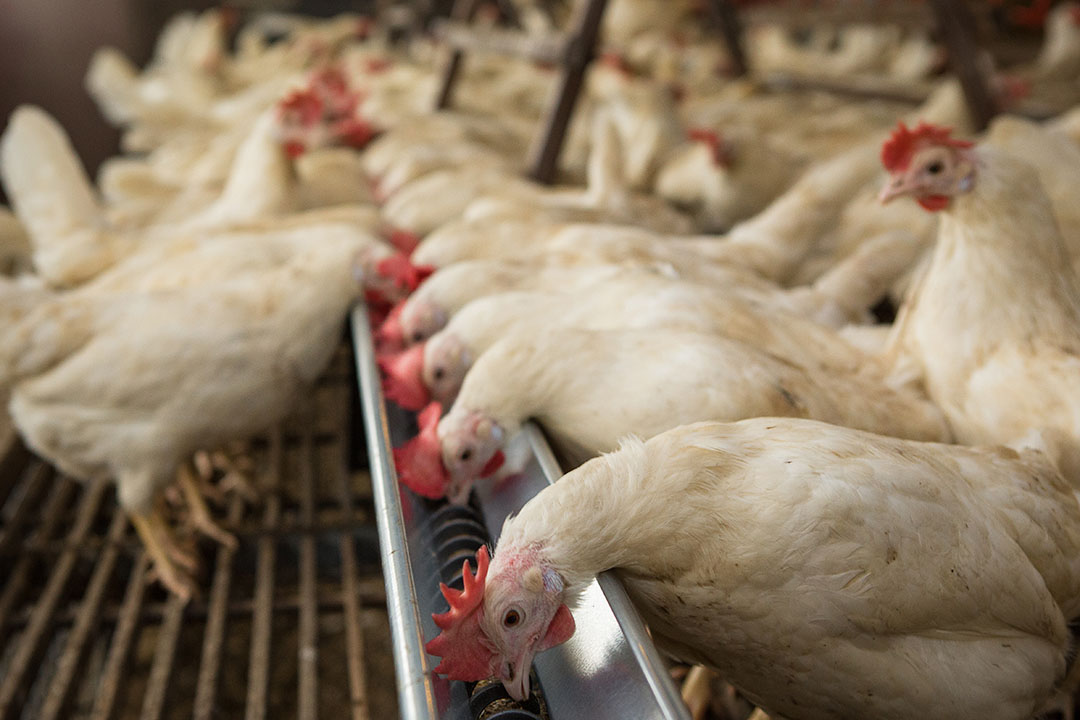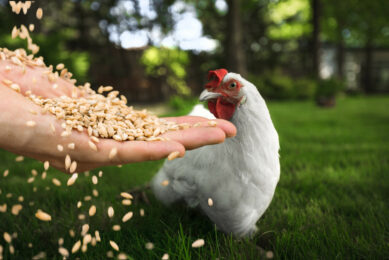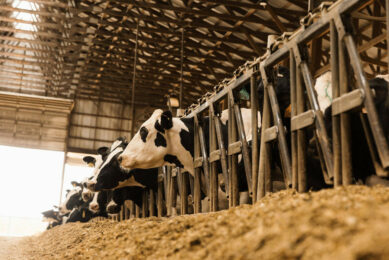Controlling Sudden Death Syndrome via feed strategies

Sudden Death Syndrome (SDS) is a problem that has been observed in many countries where other major poultry diseases have been brought under control. Smart feeding strategies can limit SDS incidence and damage.
Sudden Death Syndrome occurs in broiler chickens of all ages and at the onset of sexual maturity in broiler breeders. Affected birds unexpectedly jump in the air, convulse, squawk, flip over and die. Mortality due to SDS ranges from 0.5% to 9.62% in broiler chickens and from 0.5% to 3.0% in broiler breeders. Economically, SDS is a major source of instant profit loss. According to US statistics, preventing SDS would result in an estimated saving of US$ 130-265 million. The control of SDS, therefore, is considered of paramount importance in alleviating the problem. Feeding strategies and other management strategies can help to achieve this.
Feed ingredients
A greater incidence of SDS has been recorded in broiler chicks fed with wheat-soybean meal diets than corn-soybean meal-based diets. The increased amount of biotin provided by corn relative to the amount provided by wheat (0.108 mg/kg for corn and 0.043 mg/kg for wheat) may have contributed to the decreased mortality found with a corn diet. There is also a marked increase in lactic acid in the crop when a high protein diet containing an excess of sulphur is fed to the birds in combination with most grain feeds. With corn-based diets, however, the problem is less severe due to the lower levels of lactic acid. A study conducted on 51 broiler flocks in Canada reported that the SDS incidence was greater in flocks fed a diet supplied by a feed company that uses less corn and more of other grain types.
Protein
A lower incidence of SDS (50%) was recorded in 29-56 day-old broiler chickens fed with a 24% protein finisher diet, relative to birds fed a 19% protein finisher diet. The incidence of SDS also appeared to decrease when a meat meal was used in the diet. It was concluded that meat meal sources provided one or more unknown factors which protected birds against SDS. Further, diets including meat meal contain less salts and supplemental fat which can have a considerable impact on the incidence of SDS.
Lipids
It was found that birds fed with saturated oils, such as sunflower oil, had the lowest incidence of SDS and also showed lower mortality from SDS than broilers fed with a saturated fat source, such as tallow. The levels of linoleic and arachidonic acids are lower when sunflower oil is used and increase when tallow is used as a fat supplement. These acids act as precursors to prostaglandins (PGs), a family of lipid-like compounds derived from polyunsaturated fatty acids. A higher level of PGs may be involved in the development of SDS by inducing a sequential pathological process that causes hypoxia, enhances respiratory distress and leads to SDS.
Minerals
Using diets containing lower levels of calcium, phosphorus, potassium and magnesium, the incidence of SDS was successfully reduced and the supply of these elements therefore should be taken into account. This particularly applies when the diet contains high levels of saturated fatty acids. With such diets, an insoluble soap is formed in the digestive tract which decreases the retention of these minerals. This reaction can influence the nervous system and in turn create the necessary conditions for SDS to occur.
Vitamins
It has been suggested that vitamin K, which is an anti-haemorrhagic vitamin, might also be involved in SDS, since extensive haemorrhaging of the kidneys and blood clots were often found in SDS broilers. In one study 3 different levels of vitamin K (1, 5 and 10 mg/kg) were added to the diets fed to broiler chickens. There were fewer deaths due to SDS among the broilers fed diets containing 10 mg/kg of vitamin K.
The incidence of SDS was also reduced by the inclusion of additional vitamins. Biotin supplementation of 33 mg/kg in the diet reduced the incidence of SDS compared with diets where biotin was not supplemented.
Excessive intake of vitamins A, D, E, C and niacin were found to be associated with a variety of metabolic lesions and adversely affect heart performance, leading to an increased risk of heart failure and SDS in broilers. Over-supplementation may be attributed to the fact that some vitamins, such as A, D, and E, are added to diets on the assumption that the feed is deficient in these without prior analysis. Consequently, it is quite probable that some vitamins are occurring in the diet at excessive levels, hence leading to SDS.
 Feed Efficiency Special
Feed Efficiency Special
Animal feed costs make-up the majority of production cost. So it makes sense to get the most out of every kilogram of feed – known as feed efficiency. The challenge is keeping up with the constantly changing dynamics in agriculture. This section delves into the latest nutritional strategies.
Feed processing
Pelleted feed is extensively used in the broiler industry and has many advantages. It reduces bulk, minimises waste and destroys toxins during the pelleting process and is more digestible compared with the mash form of feed. Pelleted feed, however, increases the growth rate and thus also the incidence of SDS. It has been suggested that one or more toxic factors are created when protein supplements are subjected to pelleting which may be involved in causing SDS. The toxin is produced when soybean meal is pelleted but not when meat meal is pelleted. Thus the inclusion of meat meal supplies a previously unidentified factor found in animal protein which provides some protection against SDS.
In some reports, the etiology of SDS has been associated with thermal feed processing. Thermal processing increases the number of mutagenic heterocyclic amines which experimentally produce foci of chronic inflammation with myocyte necrosis, mitochondrial swelling and vacuolisation, along with a distortion of the banding pattern and DNA damage in the cardiomyocytes; all factors contributing to the incidence of SDS.
Feed restriction
Feed restriction will reduce mortality due to SDS. A mortality level of 0% has been reported for feed-restricted birds compared with 3.3% under ad libitum feeding. Strategies to decrease growth and metabolic rate to some extent and hence alleviate the incidence of SDS, as well as improve feed conversion in broiler chickens include: Skip-a-day feeding, intermittent lighting programmes and feed supplementation. The skip-a day feeding works best when used for three weeks starting at 1 day-old. This method can improve carcass quality and reduce SDS which is often associated with birds that are on ad libitum feed intake. The use of intermittent lighting programmes (1 hour light: 3 hours dark from 8 to 49 days) has the advantage of reducing the incidence of SDS compared with the continuous lighting schedule (23 hours light: 1 hour dark), with no reduction of weight at market age.
In the area of additives, one study noted that the use of 50g/kg of calcium propionate as an appetite suppressor resulted in weight gains in birds close to those obtained under a recommended programme of quantitative feed restriction between 2 to 6 weeks of age. Glycolic acid has also been used as a chemical means of restricting the feed intake of broilers. The feed intake of birds fed on diets supplemented with 1.5% and 3% glycolic acid was depressed by 17% and 45%, respectively. The reduction in body weight gain resulting from the chemical restriction of feed intake was recovered at 49 days of age.











